Lea Wait's Blog, page 47
January 17, 2024
Machine Guns and Typewriters
From time to time, we introduce new Maine writers to our readers. Today’s guest, with his debut crime novel, is Rob Wallace.
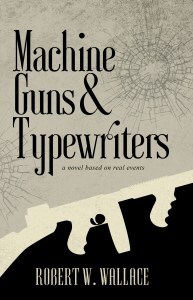 On a brisk February day in 1934, a stolen state police weapon is in the guile hands of an unstable criminal. From his perch inside the bank, he sees a policeman sprinting toward the front door. With the officer in his sights, the gunman steadies himself at the window and places his finger purposefully on the trigger.
On a brisk February day in 1934, a stolen state police weapon is in the guile hands of an unstable criminal. From his perch inside the bank, he sees a policeman sprinting toward the front door. With the officer in his sights, the gunman steadies himself at the window and places his finger purposefully on the trigger.
For the first time in Massachusetts history, a machine gun is used in a crime.
“Machine Guns & Typewriters” is the story of heroism and sacrifice entangled with bureaucracy antiquated investigative tactics during a bloody spoor of sensational robbery and brazen murder. On the outside two of Boston’s top crime reporters form an unlikely alliance which places them directly in the machine gunner’s nest.
_____________
 The last time I sat for a professional photoshoot was for the yearbook in high school. I never imagined a photo of me was so important among the checklist items gathered for the cover layout for my first book, “Machine Guns & Typewriters.”
The last time I sat for a professional photoshoot was for the yearbook in high school. I never imagined a photo of me was so important among the checklist items gathered for the cover layout for my first book, “Machine Guns & Typewriters.”
It turns out, a headshot is an essential part of the process as critical as the acts in the story arch. Well, not that dramatic of course, but along with the book cover and bio, my headshot is a standard request when pitching “MG&T” for distribution and marketing. In a way, it feels like those three items are “proof of authorship” where the 100,000 words I hammered into shape and fussed over for months could only be confirmed as my own when accompanied by a photo including my widow’s peak and the crow’s feet creasing around my eyes when I smile.
I decided to have my photo shoot at the Thos. Moser Furniture showroom in Boston. All the showrooms are beautiful, not just because of the craftsmanship of the handmade chairs and tables, but the walls are adorned with the beautiful art from local artists. It provided a variety of colorful backdrops.
I chose the Boston location partly because the Public Gardens across the street offered another unique locale in a tranquil park surrounded by old-time Boston buildings raised in the background.
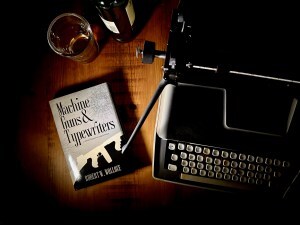 I didn’t realize just how perfect this particular Moser showroom was until the photographer needed a moment to change lenses. Holding my posture for the next set of shots, my eyes wandered out the plate glass window at the front of the store. I describe the moment like in the movie, “The Usual Suspects” when the detective dropped his coffee mug realizing he had been duped by the criminal himself spinning lies inspired by objects around the office as he fabricated a spontaneous story about “whodunit.” As I sat recalling chapters and scenes from “MG&T” the 1934 universe I have come to know clicked into place and I realized key story moments unfolded just outside the doors of the showroom proximity.
I didn’t realize just how perfect this particular Moser showroom was until the photographer needed a moment to change lenses. Holding my posture for the next set of shots, my eyes wandered out the plate glass window at the front of the store. I describe the moment like in the movie, “The Usual Suspects” when the detective dropped his coffee mug realizing he had been duped by the criminal himself spinning lies inspired by objects around the office as he fabricated a spontaneous story about “whodunit.” As I sat recalling chapters and scenes from “MG&T” the 1934 universe I have come to know clicked into place and I realized key story moments unfolded just outside the doors of the showroom proximity.
In 1934, the detective bureau for the Massachusetts State Police was stationed on the second floor of the state house which was a short walk away through Boston Common.
Around the corner at 135 Columbus Ave., a prime suspect owned a radio and electronics repair shop. This owner and operator, Abraham Faber, was a graduate of M.I.T. and the mastermind of the gang’s most daring and deadly heists. The Columbus Ave. location stands less than a mile from the Moser showroom.
The stolen Packard automobile turned murder car was hotwired outside the Statler Hotel (now the Hilton Boston Park Plaza) just around the block.
The gang’s leader and strongman, Murton Millen lived in two apartments less than two miles from the showroom.
Of course, a half mile beyond the state house was Newspaper Row. In 1934 everything printed was set in ink block along Washington Street. The Boston Globe and Boston Post operated here as two powerful papers in the city. This is where hard-nosed crime reporters Joseph F. Dinneen and Lawrence Goldberg most likely punched typewriter keys writing weighty columns exposing the truth behind the murders and robberies of the Millen-Faber Gang.
Ninety years on, a Maine legacy brand sits upon the porch of history based on true crime which changed Boston forever.
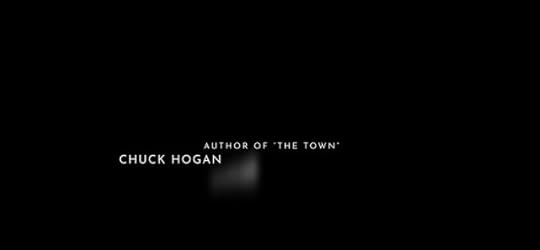
January 15, 2024
Nostalgia for 1950s TV
Kaitlyn Dunnett/Kathy Lynn Emerson here, off on a tangent sparked by musing about the effect TV shows have on kids. The argument that watching violence makes children into violent adults has been around for decades. I don’t know how valid it is, but I do remember a lot of gun and fist fights on the television shows I watched growing up. Futuristic weapons were also prevalent.

Return with me now, as The Lone Ranger would have it, to those thrilling days of yesteryear. As I recall, back then there were only three networks, although in some rural areas, viewers were only able to get one station, and that’s if the antenna on top of the television set was pointed in the right direction. I was lucky in that respect. We lived close enough to New York City to pick up all the available channels and we had an entrepreneur in our little rural town who pioneered the idea of using cable to improve reception. He also sold and repaired tv sets.
When the original live presentation of Peter Pan with Mary Martin ran in 1955, it caused a crisis at our house. Our tv died only a few minutes into the program. Fortunately, my parents rapidly came up with a save. I was bundled into the car and rushed to my best friend’s house to watch the rest of the show.

Not only did my parents have a tv set by the mid 1950s, but so did both sets of grandparents. I can remember watching the popular soap opera, The Edge of Night (1956-1984), with my maternal grandmother when I was eight or nine. On the paternal side, my grandfather was addicted to Queen for a Day (1956-1964). The contestant with the most heart-wrenching sob story was the one who won the crown.

I don’t remember watching “kid” shows like Howdy Doody (1947-1960) or The Mickey Mouse Club (1955+), but with two friends I was a proud charter member of our local Mighty Mouse (1955-1967) Fan Club. Cartoons were a Saturday morning staple—talk about violence on the small screen! Westerns were everywhere, too, from Roy Rogers (1951-1957) and The Lone Ranger (1949-1957) to Annie Oakley (1954-1956), to Sky King (1952-1956). I also loved what passed for science fiction—The Adventures of Superman (1953-1958), Flash Gordon (1954-1955), and my personal favorite, Rocky Jones, Space Ranger (1954-1955). Walt Disney’s Disneyland (1954-1958)—renamed Walt Disney Presents for 1958-1961—was another staple, introducing mini-series like Davy Crockett (1954-1955) and Zorro (1957-1960).

My mother was a fan of Raymond Burr’s Perry Mason (1957+) and devoted to variety shows, not just Ed Sullivan (1948-1971) and Red Skelton (1951-1981) but also Mel Tormé (1951-1952). Somehow, there was also time to watch situation comedies. Everyone watched I Love Lucy (1951-1957) back in the day, but we also watched shows like The Gail Storm Show: Oh, Susanna 1956-1960). Way before The Love Boat, that one took place on a cruise ship. I don’t remember a lot about it but I do recall that the actress who played the star’s pal had an all-time great real name: Zasu Pitts.

Zasu Pitts
How did all those shows affect the adult I became? Darned if I know. I certainly didn’t grow up with a fifties view of what a woman’s place should be! On the other hand, my very first writing, aside from newspapers for my dolls, was what could loosely be called fan-fic. What show? you ask. Almost all of them. The cast of Rocky Jones, Space Ranger interacted just fine with the characters from Sky King and Roy Rogers, as well as with the regulars who appeared on Mel Tormé’s variety show. There were also two characters named Kathy in the story line. One was am eight-year-old girl. The other was the queen of the kingdom where they all lived.
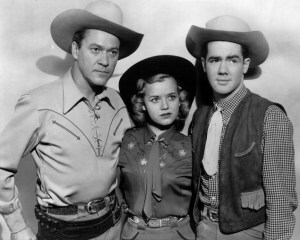
cast of Sky King
What do you think, readers? Did your television viewing during your formative years have a lasting affect on you? Share, please!

Kathy Lynn Emerson/Kaitlyn Dunnett has had sixty-four books traditionally published and has self published others. She won the Agatha Award and was an Anthony and Macavity finalist for best mystery nonfiction of 2008 for How to Write Killer Historical Mysteries and was an Agatha Award finalist in 2015 in the best mystery short story category. In 2023 she won the Lea Wait Award for “excellence and achievement” from the Maine Writers and Publishers Alliance. She was the Malice Domestic Guest of Honor in 2014. She is currently working on creating new omnibus e-book editions of her backlist titles. Her website is www.KathyLynnEmerson.com.
It’s a Mod, Mod, Mod World
 A couple of months ago, I was scrolling through my Facebook feed (always a mistake, but better than that hellscape which is now the ominous X), when I came across this painting. It engaged me immediately: the sheen on the jar and dish, the imperfect apples grown long before they got sprayed to waxy and bug-free oblivion. I looked at the caption and was stunned to see Mondrian was the artist.
A couple of months ago, I was scrolling through my Facebook feed (always a mistake, but better than that hellscape which is now the ominous X), when I came across this painting. It engaged me immediately: the sheen on the jar and dish, the imperfect apples grown long before they got sprayed to waxy and bug-free oblivion. I looked at the caption and was stunned to see Mondrian was the artist.
Now, we all think of Mondrian as the line and primary color guy whose grid paintings sell for millions, even though any kid with a ruler and poster paint could replicate the same thing in about 15 minutes. (The painting below was sold for $51 million in 2022!!!) But he wasn’t always a “modern” artist. It made me wonder about his artistic journey, so I fell down the usual rabbit hole of research.

Mondrian eventually distilled everything down to what he considered the very basics, thinking his Neoplasticism created “universal beauty,” and that figurative reality wouldn’t lead to the true spiritual nature of art. His utopian philosophy is somewhat lost on me, since I much prefer his apples.
Times change. Rock, jazz, and rap are a far departure from classical music, and how did that happen? Architecture has swung from the magnificence of cathedrals to brutal glass and concrete blocks. Evolution (some would say devolution) of the visual and auditory arts is a fascinating thing if you think about it, but the written word stays relatively immutable. Stories have a beginning, a middle, and an end. We all learned that at bedtime many years ago. Words have meaning and weight, and most writers struggle to choose the right ones, even in a blog post. (For example, I just changed “correct” to “right.”) We need to be truthful, though 1984 territory seems perilously close in the wider world.
Yes, James Joyce messed around with structure (confession: I have never read Ulysses and am unlikely to at this stage of my life), and Kate Atkinson did something groundbreaking in Life After Life. Poetry is more elastic yet. Writers can use flashbacks, multiple points of view, creative punctuation, and tenses all they want, but most readers want something they can make sense of. (Fun fact: according to an art historian, one of Mondrian’s paintings has been hanging upside-down for over 75 years.)
I’ve evolved only to the extent that I started off writing romances, though my first love was mysteries (Judy Bolton, anyone?). Because I am not much of a plotter, I thought mysteries were beyond my capabilities. Maybe they are, LOL. But I’m working on my seventh anyhow, leaving 20+ historical romances behind me.
I’ve usually alternated points of view with the main characters. This time, however, I’m writing first-person, and finding it challenging yet fun. I’m really in the head of my turn-of-the-20th-century heroine. She is very much younger than I am, so I’ve got to be careful I don’t make her too mature/contemporary/jaded. Although it seems to me people were “old-headed” and more responsible at young ages in the past. Do you know the average age of a World War II RAF pilot was 20? Of those killed in action, the average age was 22. The world was saved by college kids. Let’s hope they don’t have to do it again. “We have come a long, long way, but we have a long, long way to go.” ~Martin Luther King, Jr.
Do you care who’s “talking” in a book? Read or seen anything lately that made you say “Wow?” What’s hanging on your kitchen wall?

January 12, 2024
Weekend Update: January 13-14, 2024
 Next week at Maine Crime Writers there will be posts by Maggie Robinson (Monday), Kaitlyn Dunnett/Kathy Lynn Emerson (Tuesday), special guest Rob Wallace (Wednesday), Kate Flora (Thursday) and Maureen Milliken (Friday).
Next week at Maine Crime Writers there will be posts by Maggie Robinson (Monday), Kaitlyn Dunnett/Kathy Lynn Emerson (Tuesday), special guest Rob Wallace (Wednesday), Kate Flora (Thursday) and Maureen Milliken (Friday).
In the news department, here’s what’s happening with some of us who blog regularly at Maine Crime Writers:
Through Saturday, this fun collection of stories by series writers, including Kate Flora, is free. Grab it while you can.
An invitation to readers of this blog: Do you have news relating to Maine, Crime, or Writing? We’d love to hear from you. Just comment below to share.
And a reminder: If your library, school, or organization is looking for a speaker, we are often available to talk about the writing process, research, where we get our ideas, and other mysteries of the business, along with the very popular “Making a Mystery” with audience participation, and “Casting Call: How We Staff Our Mysteries.” We also do programs on Zoom. Contact Kate Flora
January 11, 2024
Michael Avallone – one man idea machine – and WRITER. (Not James Patterson style)
posted by Jule Selbo
I got way behind in life this month, with the holiday traveling, with the publication of my latest Dee Rommel Book (8 DAYS), a persistent (obsessive?) re-work of chapter 12 and 13 in 7 DAYS and cooking for guests and zoning out in front of the plethora of end-of-the-year movies. Since I’m a member of the WGA, I get the DVD “screeners”. For some reason, viewing the Oscar Contenders off the silver discs is more exciting that streaming them (for me) and “one does have to keep up”. I had started a post about the Legal Thriller and never got to the polish stage (maybe because I was reading Kate Flora’s knuckle-whitening legal thriller TEACH HER A LESSON.) All to say – I am RE-POSTING this because I still get inspired by this bio. This man let nothing stop him (and he didn’t do it the James Patterson way, thanks Joe Souza for the insight in your post yesterday).
We gotta enjoy the process. And Michael Avallone certainly did!

Michael Avallone was active in Mystery Writers of America. He left this earth in 1999. Who knew him?
For lovers of 1950s – 80s “pulp” mysteries, Michael Avallone might be a familiar name. I, however, first came across his name when I was researching Maine spy/thriller writer Gayle Lynds’ work for a Crime Wave panel – and Gayle’s history writing for the Nick Carter series surfaced. Avallone was a “regular” “co-writer” for the Killmaster books that used the long-running house name (Nick Carter). For some reason I clicked on his name – and found he was a guy who boasted of authoring 1,000 books. He said “(I’d) rather write than sleep or eat” and believed “…a professional writer should be able to write anything from the Bible to a garden seed catalog and everything there is that lies in between. . . ” More philosophically, he wrote: “…writing is the last frontier of individualism in the world – the one art a man can do alone that basically resists collaboration.” (Take that, A.I.!)

The deeper dive in Avallone began.
I found out that in actuality Avallone, writing under 17 pseudonyms (male and female), and in multiple genres, has a book count closer to 223. (But, giving him a break, he may have included his novellas, articles and short stories in that 1000 work total.) 223 or 1000? Choose one of the other, the output is amazing.
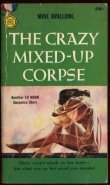
Avallone was born in 1924 in New York, he had 17 siblings, his dad was a stonemason, his formative years were spent during the Great Depression. He often talked about spending as much time as he could at the movies and reading pulp fiction as well as reading and re-reading Dumas’ D’Artagnan/Musketeers series. (Dumas wrote in lots of different genres too, I was reminded of that when I was making sure I spelled “D’Artagnan” correctly.) While in the Army (1943 – 1946), Avallone wrote a diary, penned love letters for his buddies, authored an Army News column. Post war, in 1953, he published his first novel, The Tall Dolores, starring private investigator Ed Noon.

“I’ve been writing since I discovered pencils,” Avallone explained. Genres he dabbled in: horror (his Satan Sleuth series I have to check out – it included The Werewolf Walks Tonight, and Devil Devil), westerns, gothic romances, soft-core porn, sci-fi.
 He also wrote essays, short stories, liner notes for albums, poetry, movie reviews, mysteries for children and novelizations of television series like The Man From U.N.C.L.E., The Partridge Family, The New Adventures of Charlie Chan and of movies like Beneath the Planet of the Apes, Shock Corridor and Cannonball Run.
He also wrote essays, short stories, liner notes for albums, poetry, movie reviews, mysteries for children and novelizations of television series like The Man From U.N.C.L.E., The Partridge Family, The New Adventures of Charlie Chan and of movies like Beneath the Planet of the Apes, Shock Corridor and Cannonball Run.

Under the pseudonym Troy Conway he wrote The Coxeman, spy/mysteries that parodied the Man from U.N.C.L.E tv show, using “tongue-in-cheek porn”. Titles included: The Blow-Your-Mind Job, The Cunning Linguist and A Stiff Proposition. What were most publishers at the time paying for these novelizations? About $1,000 a book.



(Avallone also did a ‘higher-brow’ novelization: A Woman Called Golda.”, based on an 8 part mini-series on Golda Meir.)
But predominantly, Avallone stayed with his favorite protagonist, Ed Noon, in the crime/mystery genre. He even wrote radio serials based on his Ed Noon character – a series called The Wind Up.
Did the man ever sleep?
David Avallone, a filmmaker and one of the author’s two sons wrote in his blog: My father got up every morning around seven a.m. He would walk to the local coffee shop and have a cup or two with the hoi polloi. He would return home before 9:30 a.m. and sit at “the machine.” The late industrial revolution sound effect of a manual typewriter would then start up. It would go, with very few pauses longer than a minute, until someone brought him a sandwich, or reminded him to eat. When I would come home from school, he would finish whatever sentence he was in the middle of, and we’d play catch for an hour. Then back at the machine. Until dinner. If he was enjoying himself a lot, or had a deadline, he would go back to the machine and write until nine, ten at night. He did this five or six days a week for something like fifty years. The result was not always literature, but sometimes it was.
If he didn’t have a book or a story to write, he’d knock out essays or spend the day writing letters. Hundreds of thousands of letters.

(Avallone had a reputation for being a tireless self -promoter and letter writer and being his own greatest fan.)
Avallone said he became a writer out of love of the English language – the ability to make people conjure images by mentioning single words and further holding their attention by stringing the words together into a sentence. He said he wrote for the pleasure, rather than the gain of fame or money. Asked if he ever considered writing to be a painful exercise, he said: “Writing is my religion.” He once completed a novel in a day and a half. Another time, he wrote a 1,500-word short story in 20 minutes while dining in a New York restaurant. In his all-time-record year, he churned out 27 books.
Avallone also liked to talk about writing, he lectured in high school and college writing classes – at places such as Columbia to Rutgers. His encouragement: “The best advice any writer can give to another writer or someone who wants to write, which cannot be taught, is to write, write, write.”

Certainly, he took his own advice. And, perhaps, in writing writing writing, he got a reputation for more than a few off/weird/not-thought-through turns of phrase. The Independent noted that Avallone caused “grievous bodily harm” to the English language; the magazine highlighted a few examples of “sketchy prose styling and mangled or downright weird metaphors”. From Avallone’s Assassins Don’t Die in Bed (1968): “His thin mustache was neatly placed between a peaked nose and two eyes like black marbles.” From The Horrible Man (1968): “She … unearthed one of her fantastic breasts from the folds of her sheath skirt.” The New York Times cited this gem: “The footsteps didn’t walk right in. They stopped outside the door and knocked…” as well as “The whites of his eyes came up in their sockets like moons over an oasis lined with palm trees.” (Not sure if the editors were top-notch.)
 But he also got a few kudos (and a 1989 Anthony Award for his last Ed Noon novel, High Noon at Midnight.) Author Bill Pronzini, who reviewed a few of Avallone’s books, wrote “Ed Noon is the least sexually arrogant private eye in the mystery history. When the heroine tells him she finds him attractive, he is almost pathetically grateful. He goes on to share with the reader his almost unbearable loneliness… This human quality is extremely refreshing. It is part of the way Avallone’s characters talk about fundamental human needs.”
But he also got a few kudos (and a 1989 Anthony Award for his last Ed Noon novel, High Noon at Midnight.) Author Bill Pronzini, who reviewed a few of Avallone’s books, wrote “Ed Noon is the least sexually arrogant private eye in the mystery history. When the heroine tells him she finds him attractive, he is almost pathetically grateful. He goes on to share with the reader his almost unbearable loneliness… This human quality is extremely refreshing. It is part of the way Avallone’s characters talk about fundamental human needs.”
I’m sure there are people reading this blog who know Bill Pronzini, another author with a very large number of titles, (40+ Nameless Detective books, 300+ short stories, lots of crime/mystery awards, also the Carpenter and Quincannon Series written with Marcia Muller (his wife)). Who’s met him?
Pronzini also wrote this of Avallone’s work: “On the one hand, Noon is a standard tough, wisecracking op with a taste for copious bloodletting and a Spillane-type hatred of Communists, dissidents, hippies, pacifists, militant blacks, liberated women, and anyone or anything else of a liberal cant. On the other hand, he is a distinctly if eccentrically drawn character who loves baseball, old movies, and dumb jokes, and who gets himself mixed up with some of the most improbable individuals ever committed to paper.”
Despite Pronzini’s observations about Avallone’s ability to relay fundamental human needs, it’s clear (to me) Avallone often embraced a heightened, imaginative reality in choosing his characters and plots. The client Dolores, in The Tall Dolores, is the tallest burlesque queen in the world, the “shapeliest Amazon”, a regular Empire State Building of female feminine dame. Dolores hires Noon to find her missing lover, who is even taller than she is. He’s disappeared under mysterious circumstances and then he is found, dead, on the Museum of Natural History’s steps.
 In The Case of the Bouncing Betty (1956) a 440-pound female mattress tester becomes Noon’s client. Private Investigator Noon was originally a rather straightforward variation on the classic pulp private eye. But as the series developed, it became increasingly original and eccentric, with unique characters and plot devices.
In The Case of the Bouncing Betty (1956) a 440-pound female mattress tester becomes Noon’s client. Private Investigator Noon was originally a rather straightforward variation on the classic pulp private eye. But as the series developed, it became increasingly original and eccentric, with unique characters and plot devices.

Noon even became an unlikely sometime-operative for the President of the United States and was sent off on top secret assignments (in The Hot Body (1973) Noon has to stop an ex-First Lady (a Jackie Kennedy-type) from defecting to Castro’s Cuba.
Supporters refer to Avallone as “a fertile pro who delivered a good read and never condescended to any assignment no matter how unpromising—in fact, Avallone’s vibrant self-regard tended to elevate all of his work, and in conversation he could discuss his artistic intentions in one of his Partridge Family novels with the detail and fervor of a Shakespeare scholar annotating Hamlet.”

Some point to Avallone’s sometimes hilarious prose style – and the “Noonisms” (similes, metaphors, and descriptive passages): “Her hips were beautifully arched and her breasts were like proud flags waving triumphantly. She carried them high and mighty.” And: “I flung a quick glance through the soot-stained windows. A mountain range and a dark night sky peppered with salty-looking stars winked at me.”
Since I’ve always enjoyed reading overly “pulpy” turns of phrase in 1940s, 50s 60s mysteries (but never try to emulate Spillane, Chandler, Woolrich, Frederik Brown etc.), I was interested to see how Avallone might have introduced the “beautiful African American Melissa Mercer” that Ed Noon hired as his secretary once he had gained some success and his bank account was flush.

She is introduced in Bedroom Bolero (1963); this was the 13th book in the Ed Noon series. I was surprised that he held back in this section, and chose to deal with a “social issue” (in a way)…
She was a slight, miniature doll of a girl, with large eyes and a mouth that didn’t need paint. Her clothes were plain but tasteful, fully advertising she knew what to do with her hard-earned money. But there was a flash of disbelief in her eyes when I told her the job was hers.
“Why are you giving me the job? Think I’ll be easy?”
“I don’t pinch, flirt or rub noses in the office.”
“Sorry, it’s just that I’ve been had by white men. I’ve worn myself out trying to convince them being a colored girl is not a cliché.”
“I’m enlightened, Miss Mercer.”
I’ve done some research on Avallone now, I’m ready to read a few of his Ed Noon books. Another Avallone book I’m ready to check out: 5 MINUTE MYSTERES.
 It contains a group of small stories, written to be brain-teasers. Each is supposed to have an “aha” that the reader needs to pick up on to solve the mystery. GoodReads reviewers find most of the stories successful.
It contains a group of small stories, written to be brain-teasers. Each is supposed to have an “aha” that the reader needs to pick up on to solve the mystery. GoodReads reviewers find most of the stories successful.
Avallone was inducted into the New Jersey Hall of Fame (Arts and Letters category) and was awarded a Literary Luminary of New Jersey in 1977. He was editor of the MWA newsletter for three years (1962-65) and also served on its board.
On February 26, 1999, the acclaimed “pulpmeister” suffered a heart attack. He’s probably on a typewriter – somewhere – typing away – if you believe there is a somewhere out there.
January 9, 2024
The James Patterson Method

I can understand why James Patterson has a stable of writers writing his novels. He’s an idea guy and freely admits that he’s not the best stylist when it comes to putting words down on paper. Sixty Minutes did a story about him years back and asked him what he was working on. Patterson proceeded to open a file cabinet and pull out a drawer, showing the interviewer thirty to forty ideas he had come up with.
What do you think of this method? I have mixed feelings on account that Patterson is such a generous and giving author. Some may think that Patterson having a stable of authors pumping out his novels is abhorrent, and in some ways I agree. Yet on the other hand, look at the careers he’s nurtured and grown. I’m sure the authors working with Patterson are happy, both financially and professionally, after aligning themselves with him. Everyone is doing well and making money. And the readers are still lapping up his books and making Patterson one of the richest and most celebrated authors in the world.
On the other hand . . . It feels like a factory, pumping out formulaic novel after formulaic novel. It’s similar to the movie industry putting out sequels and those stupid superhero movies. Honestly, I can’t read a Patterson novel. They seem like fluff to me. It is a literary sweatshop run by a wealthy overlord.
And yet I too have many ideas that I’d love to get out in the world. But how can I possibly do this in one lifetime. I, too, feel that my ability to generate ideas sometimes outweighs my skills as a writer. Currently, I’m plodding along with my newest book while the ideas keep coming to me. What if I could hire some talented writers to take my ideas and run with them? Would I do it, especially if I knew that this would make me a lot of money? Sadly, I think I would. As it stands, most of these brilliant plots I’ve devised will never make it out into the world because of time constraints.
Also, it would be fun to branch off and write about different topics. A literary novel, maybe. I definitely would write more horror and sci-fi stories. Often in this business, writers get pigeonholed into a certain genre and find it hard to break out. Their fans expect it. The publishers expects it. Their literary agent works in a specific genre.
I’ve always been an idea guy. They come to me all the time. Sometimes it starts with a character I’ve thought about. Other times an interesting idea comes to mind that no one has explored. Or a clever ending. I recently discovered a bizarre and fascinating medical case that is little known, but would be an intriguing physical trait for one of my characters. If I see two people arguing on the street, I concoct dialogue in my head to set the scene. While driving, I provide names to the pedestrians walking along the sidewalk. Everything in life is a narrative, every interaction a potential storyline. A train coming out of a tunnel. A woman walking a dog and looking upset. Two people in front of me at a baseball game and taking about their marriages. As a writer, I see life that way. I see stories in everything and everybody, which is why my head is full of plot ideas.
Yes, the next step is AI writing novels, but that’s a subject for another day. I’m just interested where you guys stand on this. Are you an idea guy or a word stylist? Or maybe you‘re a combination of the two. In this regard, I think every writer is on the spectrum somewhere. Maybe for me it’s because the ideas come easy without the slog of having to sit down and put these ideas into paper with my words. Then creating sentences. Paragraphs then become chapters. Writing is hard. Very hard, my dudes. Editing is hard too. But let them ideas keep coming.
In any case, my new novel, THE ANCHORMAN’S WIFE, is on sale this week for .99 cents. Where can you get a deal that good? For one third the price of your coffee, you’ll be able to spend a few days with some backbiting and evil characters. https://www.amazon.com/Anchormans-Wife-Novel-Joseph-Souza-ebook/dp/B0CFX6C1VP?ref_=ast_author_mpb
Happy New Year and enjoy your reading and writing!

January 8, 2024
Is That A Full Monty, Python?

John Clark musing on ‘stuff’. Real Mainers are often familiar with someone who ‘knows stuff’. They’re incredibly competent, often self-taught folks who seldom have to advertise to get customers. Such individuals’ services are worth more than they generally charge and their skill set is passed around like Grandma Crebb’s apple pie recipe at a grange supper.
In the literary world one such cadre is represented by librarians. Good ones ‘know stuff’. They know a lot, but more importantly, they have the sense to know what they don’t. Many times this is more valuable because they have the curiosity, research skills, and resources to get whatever answer a patron wants in a courteous and timely manner. That drive and skill doesn’t diminish in retirement. I must get at least one informal request a week, generally from one of my fellow ‘pooligans’ at the Alfond therapy pool. This week, it was from my buddy Dana who was lamenting the difficulty in finding real leather belts that last. This morning, I’ll give him a printout with three companies that sell exactly what he wants.
When I started writing this entry for MCW, I had no clue how it was going to start and that’s one of the aspects of writing I like best…going from ‘huh’ to an idea that takes off. My original plan was to share a new direction or two that my creativity is taking. It started when I got serious about looking at a blog that is shared frequently on the Short mystery group. https://publishedtodeath.blogspot.com/
It collects links to many writing contests/challenges that have opened up. While many aren’t applicable/open to me, there are some every month that intrigue me, so I’m gearing some of my creative energy and time toward them. Two I recently entered involved writing a poem relevant to a photo. The image showed an empty shopping cart in a vacant parking lot in winter with the sun setting beyond a railroad track. The other was one where I had to write a 53 word story using a prompt. (both are recurring monthly challenges).
I’m currently letting a story possibility for the annual Al Blanchard and Devil’s Snare: Best New England Crime Stories 2024, contests germinate in my head. It got its start from something our late mother, A. Carman Clark told me about a many times great grandmother. I’ve never written a historical mystery short story, but this one is well along in being written in my subconscious.
My other new experiment is on Substack where I’m serializing a book I wrote when I first took the NANOWRIMO challenge years ago. It’s called Afternoon Break and is not behind a paywall. I will be curious to see what kind of response it will get. If you’re interested, here’s the link.
https://songthresher.substack.com/publish/posts

January 5, 2024
Weekend Update: January 6-7, 2024
 Next week at Maine Crime Writers there will be posts by John Clark (Monday), Joe Souza (Tuesday), Jule Selbo (Thursday) and Vaughn Hardacker (Friday).
Next week at Maine Crime Writers there will be posts by John Clark (Monday), Joe Souza (Tuesday), Jule Selbo (Thursday) and Vaughn Hardacker (Friday).
In the news department, here’s what’s happening with some of us who blog regularly at Maine Crime Writers:
An invitation to readers of this blog: Do you have news relating to Maine, Crime, or Writing? We’d love to hear from you. Just comment below to share.
And a reminder: If your library, school, or organization is looking for a speaker, we are often available to talk about the writing process, research, where we get our ideas, and other mysteries of the business, along with the very popular “Making a Mystery” with audience participation, and “Casting Call: How We Staff Our Mysteries.” We also do programs on Zoom. Contact Kate Flora
January 4, 2024
MY HOLIDAY BOOK HAUL
This holiday season my loved ones came through once again, gracing me with a delightful assortment of books with which to ring in the new year.
I revel in unwrapping every telltale square gift, the only suspense being the sort of book I’ll find. Fiction or non? Mystery or history? Novels or short story collections? I love them all and am grateful to the family and friends who seek out titles they know I’ll enjoy.
Taking it from the top, here’s a summary of this year’s wonderful book haul:

Brenda’s holiday books
The Best American Mystery and Suspense Anthology, edited this year by Lisa Unger in conjunction with series editor Steph Cha. The 20-author lineup is rich with superb writers, and I look so forward to a long-afternoon immersed in stories by S.A. Cosby, Margaret Randall, Leigh Newman, Joseph S. Walker, the always great Walter Mosley, and more.
Happiness is A Warm Gun: Crime Fiction Inspired by the Songs of the Beatles, edited by Josh Pachter, is an anthology I’ve been particularly eager to read. Brilliantly conceived, it contains seventeen stories, each using as a jumping off point a Beatles song from one of the seventeen studio albums released by the Fab Four between 1964-1970. Friends Kristopher Zgorski and Dru Ann Love, known to many of us as talented and hardworking reviewers of crime fiction, wrote a story called “Ticket To Ride” from the Help! (1965). I turned to it as soon as I opened the book and was so darned impressed by their collaborative debut. Great story, Kris and Dru Ann!
the wren, the wren by the estimable Anne Enright, is about three generations of women scarred by an arrogant, self-reverential poet who leaves Ireland to seek fame in America, leaving them bruised and reeling in his wake. Their mutual connection and love for one another is the focus, not his careless cruelty. Having heard so much praise for this book, and having loved Enright’s 2015 novel The Green Road, I cannot wait to read it.
This Other Eden by Paul Harding, a finalist for the National Book Award, is about fictional Apple Island, based on a real island off Phippsburg. Malaga Island was home to a multi-racial fishing community from the late 1700s until 1912, when its residents were forcibly removed by the State of Maine as the eugenics movement took hold. While praised by many, Harding’s novel has been criticized by others for incorporating into his novel the same powerful, despicable lies that were told about the real-life residents of Malaga Island to justify the state’s brutal action. I don’t expect The Other Eden to be an easy read, but I look forward to it, and feel sure it will lead me to other books about the tragic history of real-life Malaga Island.
The Plinko Bounce by Martin Clark is about a public defender in rural Virginia assigned to defend a violent career criminal charged with murdering a wealthy businesswoman. Technicalities offer the lawyer a way to get his client acquitted, but it sounds to me that this novel is going to be about when a win isn’t really a win. My current WIP is about a criminal defense lawyer here in Maine who is often faced with ethical dilemmas, so I’m especially keen to read this one.
The Frozen River by Ariel Lawhon is a novel inspired by Martha Ballard, the Maine midwife whose quiet, dogged heroism was illuminated by Laurel Thatcher Ulrich in A Midwife’s Tale, winner of the Pulitzer Prize for History in 1991. In this historical novel, Lawhon imagines Martha Ballard investigating a terrible crime during the winter of 1789, when the Kennebec River is frozen, and secrets (and evidence) lie under the ice. I loved A Midwife’s Tale, and feel sure I’ll need an entire weekend to read this novel. The challenge will be not to speed through it, because an early peek left no doubt that Lawhon’s prose is beautiful.
Dark Hollow and The Woman in the Woods are two thrillers in John Connolly’s Maine-set Charlie Parker series I’ve not read. He’s a master at keeping his readers up deep into the night, and winter is the perfect time for that, no? I hope we get a good snowstorm soon so I can dig in to these novels before digging out the walkways.
Time of Wonder, written and illustrated by the amazing Robert McCloskey. Last Christmas I received new versions of One Morning in Maine and Burt Dow, Deep-water Man, so a McCloskey for Christmas is something of a tradition. I so enjoyed last summer’s McCloskey exhibition at Curtis Memorial Library in Brunswick (read more about that here: https://mainecrimewriters.com/2023/10/05/hanging-out-with-imagined-friends/
VEG-TABLE is a marvelous vegetarian cookbook gifted by a niece who also is a big fan of creative vegetable cookery. I’ve perused it already, and yep, it’s going to be a fun way to eat healthy in the new year (which we’re all trying to do, right?)
In summary, once again I’ve been blessed with book riches, and I’m filled with gratitude for those who keep me entertained, challenged and inspired.
Happy reading in 2024, everyone! Commenters, what books did you receive as holiday gifts?
Brenda Buchanan sets her novels in and around Portland. Her three-book Joe Gale series features a contemporary newspaper reporter with old-school style who covers the courts and crime beat at the fictional Portland Daily Chronicle. An attorney since 1990, Brenda currently is writing a series about a criminal defense lawyer who takes on cases others won’t touch in the hometown to which she swore she’d never return. Brenda’s short story, “Means, Motive, and Opportunity,” was in the anthology Bloodroot: Best New England Crime Stories 2021 and received an honorable mention in Best American Mystery and Suspense 2022. Her story Assumptions Can Get You Killed appears in Wolfsbane: Best New England Crime Stories 2023.
A Wintry Mix of Words
Kate Flora:. I love words. Growing up, we always had a dictionary near the table so we

And somehow, the necessary words are found
could look things up. No cell phones or Alexa back then. Part of the fun was discovering what other words were on the page beside the one we were looking for. We played word games. My brother John punned until everyone screamed. We were readers. Mom was a writer. We couldn’t get away from words, nor did we want to.
This week, well, for the past two weeks, when I’ve been able to escape from holiday tasks, I’ve been engaged in a job that makes me hate words: cutting 5000 words out of a manuscript so that an editor will read it. This isn’t the “cut out those boring passages” or the “this scene isn’t necessary to the plot’ editing. This is word by word, sentence by sentence, tightening things up. It has been excruciating. Now the end is in sight, and I’m seeing my writing differently. So I admit it has been a good exercise. Just painfully slow.
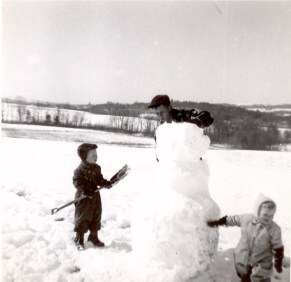 But today’s blog isn’t about cutting words. It’s about choosing them. It’s fun to choose the right word for a description or a scene. Winter’s first real storm on the horizon is a good time to think about words for winter. So I dig out my trusty Rodale’s Synonym Finder (a book no writer can be without) and begin to read.
But today’s blog isn’t about cutting words. It’s about choosing them. It’s fun to choose the right word for a description or a scene. Winter’s first real storm on the horizon is a good time to think about words for winter. So I dig out my trusty Rodale’s Synonym Finder (a book no writer can be without) and begin to read.
I am looking for the word “Winter.” It isn’t here. Happily, I find “Wintry.” It leads me to delicious choices like hibernal. Hiemal. Brumal. Cold. Frigid. Freezing. Ice-cold. Shiveringly cold. Icy. Frosty, snowy, arctic, glacial or hyperboreal. Then on to Siberian, inclement, stormy, blizzardly, windy, bitter, nippy, sharp, piercing, biting, cutting, brisk, severe, rigorous, hard, and cruel.
Does this make you want to pick up your pen? Are you, like me, a writer who loves lists of words? Who thinks it would be fun to create a character who actually uses words like hyperboreal, brumal, or glacial?
If I read on, the book offers me lovely dark words appealing to a crime writer, particularly  one who is writing during the dark months in a cold New England landscape. Here are some tasty words to sample over your morning coffee: bleak, desolate, stark, cheerless, gloomy, dismal, dreary, depressing, unpromising, somber, melancholy. How about dark, gray, overcast, sullen, or lowering? These words pretty well fit the woods behind my house, which are textured shades of browns and grays and have been since the leaves fell in November.
one who is writing during the dark months in a cold New England landscape. Here are some tasty words to sample over your morning coffee: bleak, desolate, stark, cheerless, gloomy, dismal, dreary, depressing, unpromising, somber, melancholy. How about dark, gray, overcast, sullen, or lowering? These words pretty well fit the woods behind my house, which are textured shades of browns and grays and have been since the leaves fell in November.
When I go looking for “hibernal,” it isn’t there, but “hibernate” pops up at me, the perfect thing to do during the month of January. Hibernate leads to: lie dormant, lie idle, lie fallow, stagnate, vegetate, and estivate. Perhaps more fitting, for those of us who find these winter months perfect for sitting at our desks and listening to the voices in our heads, there are these: withdraw, retire, seclude oneself, go into hiding, lie snug, lie close, hide out, hole up, sit tight.
I am pretty much holed up, lying snug, and secluded. But I love the almost song-like rhythm of:
Hide out
Hole up
Sit tight.
These six words would be an excellent writing prompt.

The grays and browns of winter
Which leads me, since playing in dictionaries and thesauruses is part of a writer’s fun, to the far more positive word: snug. Try these lovely words on for size: cozy, intimate, comfortable, easeful, restful, relaxing, quiet, peaceful, tranquil, serene, informal, casual, warm, friendly, inviting.
I am reminded of the snug in an English bar. Snug also suggests secret, private, covert, secluded, well-hidden, screened off.
So while you are reading this, I am secluded, screened off, and well-hidden at my desk, a space which is cozy, warm, and inviting. And once the delicately eviscerated manuscript has been laid to rest, I shall turn my back on the hibernal, bleak, stark, cheerless landscape outside. I will call up a new project that suits the new year. I will:
Hide out
Hole up
Sit tight.
And probably proceed to kill someone, or at least put them in serious jeopardy.
What are you doing on this dark and somber day?
Lea Wait's Blog
- Lea Wait's profile
- 509 followers



